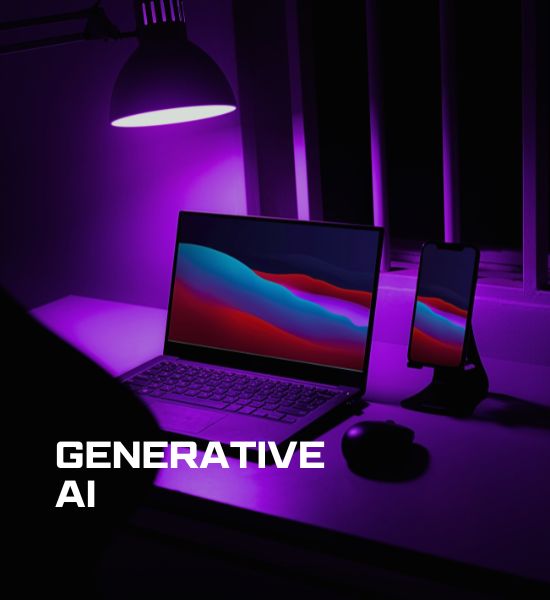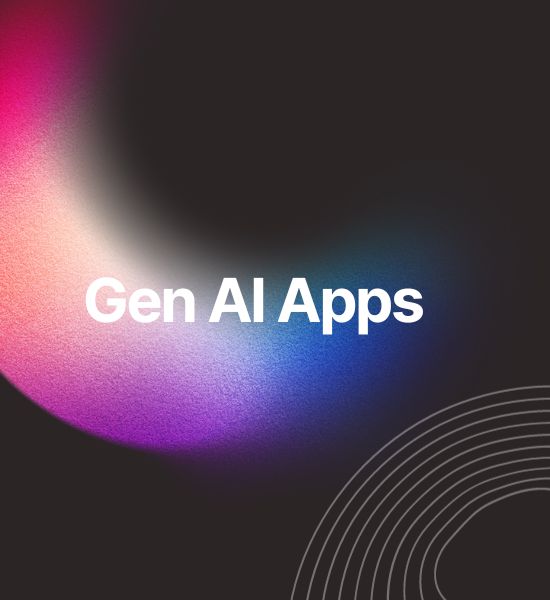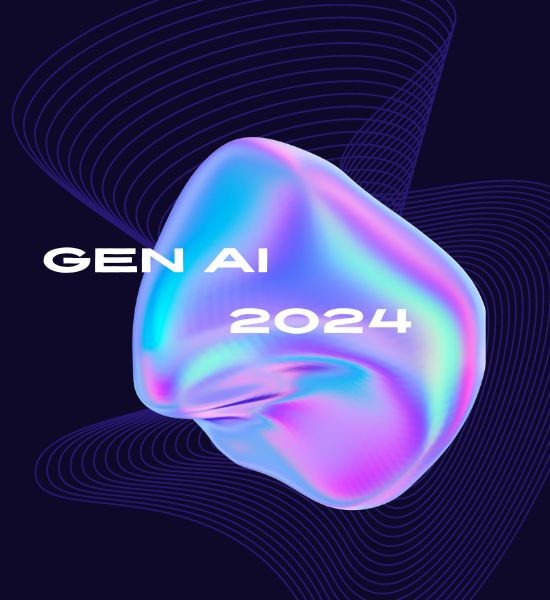Are you looking for generative AI applications? From this blog, learn more about Gen-AI apps and how to pilot Generative AI in 2024. READ NOW

What is generative AI?
Generative AI was a breakout tech trend in 2023, and it is expected to continue to grow in 2024.
Microsoft, Google, Meta, and others are investing heavily in this technology, and it’s becoming easier for smaller developers to get started.
Generative AI (GaaS) is one of the most powerful technologies on the planet and will have a significant impact on the democratization of AI’s transformative capabilities.
How do you pilot generative AI?
Generative AI is a powerful technology that can help businesses generate text, code, images, video, music, and more. However, implementing generative AI can be challenging.
Here are some actionable steps to pilot generative AI and deliver business value:
- Identify the business problem
- Determine the data requirements
- Select the right tools
- Develop the generative AI model
- Evaluate the results

How to Pilot Generative AI: Piloting generative AI involves training and fine-tuning models to generate desired outputs. Here’s a step-by-step guide on how to pilot generative AI:
- Define your objective: Clearly define what you want your generative AI model to accomplish.
- Gather and preprocess the data. Collect a diverse and representative dataset that aligns with your objective.
- Choose a generative AI framework. Select a framework that suits your needs. Popular frameworks include OpenAI’s GPT, DeepMind’s WaveNet, and TensorFlow’s Magenta.
- Train the model. Use your selected framework to train the generative AI model on your dataset.
- Fine-tune the model: After the initial training, fine-tune the model on a more specific dataset or task to improve its performance and align it with your desired objectives.
- Evaluate and iterate: Evaluate the performance of your generative AI model using appropriate metrics and qualitative assessment.
- Generate outputs: Once you’re satisfied with the performance of your generative AI model, use it to generate outputs for your desired application.
- Refine and optimize: Continuously refine and optimize your generative AI model based on user feedback and real-world usage.
Generative AI applications? How to Pilot Generative AI
Here’s a detailed description of generative AI applications.
ChatGPT: How to Pilot Generative AI
ChatGPT is a large language model-based chatbot developed by OpenAI that enables users to refine and steer a conversation towards a desired length, format, style, level of detail, and language.
ChatGPT was launched on November 30, 2022, and has over one million users as of December 4, 2022.
ChatGPT is similar to InstructGPT in that it’s designed to follow commands in a short amount of time and give you a detailed answer.
ChatGPT is used to generate human-like text based on context and past conversations. Users can ask ChatGPT questions and receive answers, as well as use it for tasks such as composing emails, essays, and code.

Synthesia: How to Pilot Generative AI
Synthesia, also known as Synthesia Media, is an artificial intelligence-based media generation platform for the production of video content.
Synthesia’s AI video generator enables everyone to create professional videos without mics, cameras, actors, or studios.
The AI videos created with Synthesia have been used for various purposes, including sales enablement videos, customer support videos, and information security training videos.
Lensa: How to Pilot Generative AI
Lensa is an AI-powered photo editing app that allows users to retouch portrait selfies and create professional-looking photos.
The app has many photo editing filters and techniques for pictures to get a sweet selfie, and users can adjust their selfies to let them stand out or use the functional camera editor for something more traditional.
The app uses artificial intelligence to render digital portraits based on photos users submit, and Lensa’s highly stylized, eye-catching portraits have taken over the internet.
SEO.ai: How to Pilot Generative AI
SEO.ai is an AI-powered platform that assists with SEO tasks, from writing SEO-optimized content to finding and evaluating relevant keywords.
The platform uses artificial intelligence to speed up the content creation and optimization process, and it provides a range of powerful tools to help users find and evaluate relevant keywords.

Some of the features of SEO.ai include generating entire blog posts, including formatting, bullet points, and pull quotes; keyword research with advanced AI options and insights; and AI-based suggestions and optimization options for headlines and titles.
SEO.ai is an example of how AI can be used to improve SEO and content creation, and it is one of many AI-powered tools available to businesses.
Stable Diffusion: How to Pilot Generative AI
Stable diffusion is a text-to-image deep learning model based on diffusion techniques. Released in 2022.
It is an AI-powered platform that assists with SEO tasks, from writing SEO-optimized content to finding and evaluating relevant keywords.
This diffusion model can take any text input and turn it into a photo-realistic image. It’s called Stable Diffusion XL.
Stable Diffusion is available online and is an easy-to-use interface for creating images using the recently released Stable Diffusion XL image generation model.
How does generative AI work? How to Pilot Generative AI
Generative AI starts with a prompt that could be in the form of a text, an image, a video, a design, musical notes, or any input that the AI system can process.
Generative AI works by using machine learning techniques to learn patterns and generate new data that is similar to the training data it was exposed to.

What are the advantages of using generative AI apps? How to Pilot Generative AI
Generative AI apps have several advantages that can benefit businesses and individuals. Here are some of the benefits of using generative AI apps:
- Enhanced creativity: Generative AI apps can inspire and augment human creativity, generating new ideas and designs.
- Improved efficiency: Generative AI apps can automate complex and time-consuming processes, enabling businesses to optimize workflows, improve efficiency, and allocate resources effectively.
- Personalized content: Generative AI apps can help with idea creation, content planning and scheduling, search engine optimization, marketing, audience engagement, research, and editing.
- Lower costs: Running generative AI on the device can reduce the cost to consumers, and it can also reduce the costs to cloud service providers and businesses.
- Improved customer satisfaction: Generative AI can help businesses reduce response times and quickly deal with common customer queries, reducing the burden on staff.
AI-Driven Business Models in 2024
FAQ: How to Pilot Generative AI
Is ChatGPT a generative AI?
Yes, ChatGPT is a generative AI language model that acts conversationally. It is one of many AI-powered tools.
What are the top 5 best generative AI apps?
- SEO.ai
- ChatGPT
- Stable Diffusion
- Lensa
- Synthesia
What is the difference between generative AI and AI?
Generative AI is a type of artificial intelligence technology that can produce various types of content, including text, imagery, audio, and synthetic data.
AI, or artificial intelligence, is a broad term that refers to the ability of machines to perform tasks that typically require human intelligence, such as learning, reasoning, problem-solving, and perception.
This content is provided purely for informational purposes. Contact us by email.
Follow us on Facebook and Pinterest.

